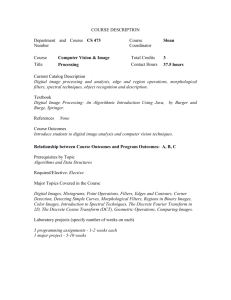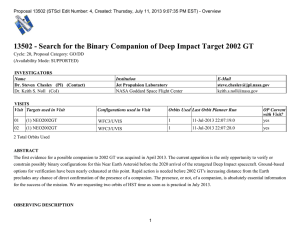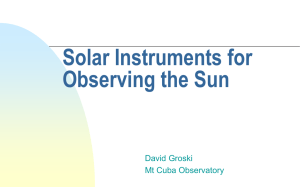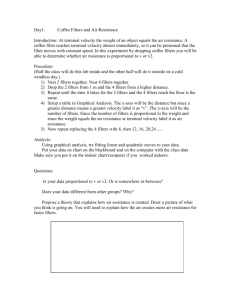ACTIVITY TITLE: UVIS Photometric Zero Points
advertisement
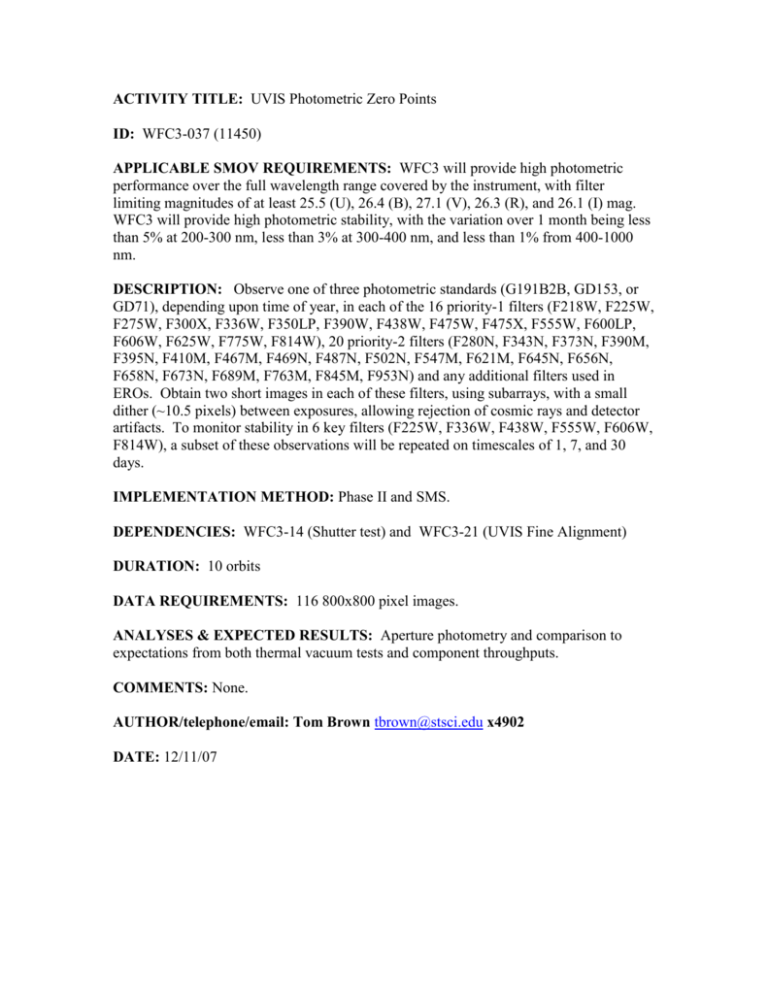
ACTIVITY TITLE: UVIS Photometric Zero Points ID: WFC3-037 (11450) APPLICABLE SMOV REQUIREMENTS: WFC3 will provide high photometric performance over the full wavelength range covered by the instrument, with filter limiting magnitudes of at least 25.5 (U), 26.4 (B), 27.1 (V), 26.3 (R), and 26.1 (I) mag. WFC3 will provide high photometric stability, with the variation over 1 month being less than 5% at 200-300 nm, less than 3% at 300-400 nm, and less than 1% from 400-1000 nm. DESCRIPTION: Observe one of three photometric standards (G191B2B, GD153, or GD71), depending upon time of year, in each of the 16 priority-1 filters (F218W, F225W, F275W, F300X, F336W, F350LP, F390W, F438W, F475W, F475X, F555W, F600LP, F606W, F625W, F775W, F814W), 20 priority-2 filters (F280N, F343N, F373N, F390M, F395N, F410M, F467M, F469N, F487N, F502N, F547M, F621M, F645N, F656N, F658N, F673N, F689M, F763M, F845M, F953N) and any additional filters used in EROs. Obtain two short images in each of these filters, using subarrays, with a small dither (~10.5 pixels) between exposures, allowing rejection of cosmic rays and detector artifacts. To monitor stability in 6 key filters (F225W, F336W, F438W, F555W, F606W, F814W), a subset of these observations will be repeated on timescales of 1, 7, and 30 days. IMPLEMENTATION METHOD: Phase II and SMS. DEPENDENCIES: WFC3-14 (Shutter test) and WFC3-21 (UVIS Fine Alignment) DURATION: 10 orbits DATA REQUIREMENTS: 116 800x800 pixel images. ANALYSES & EXPECTED RESULTS: Aperture photometry and comparison to expectations from both thermal vacuum tests and component throughputs. COMMENTS: None. AUTHOR/telephone/email: Tom Brown tbrown@stsci.edu x4902 DATE: 12/11/07
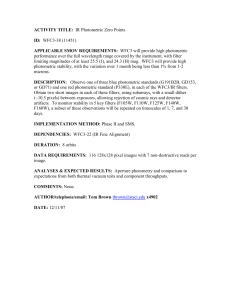

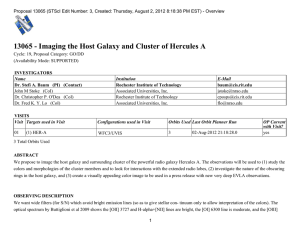
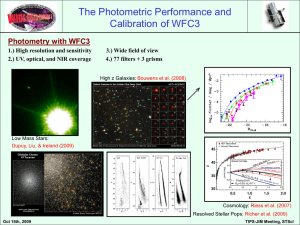

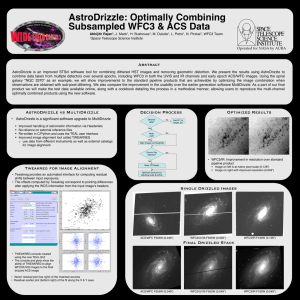
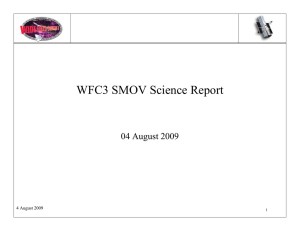
![[90.03] Status of the HST Wide Field Camera 3](http://s2.studylib.net/store/data/010852317_1-f6f11fa32e5f1bea3eb4935e8a029102-300x300.png)
